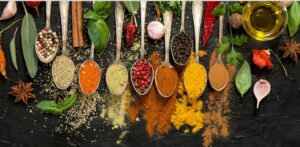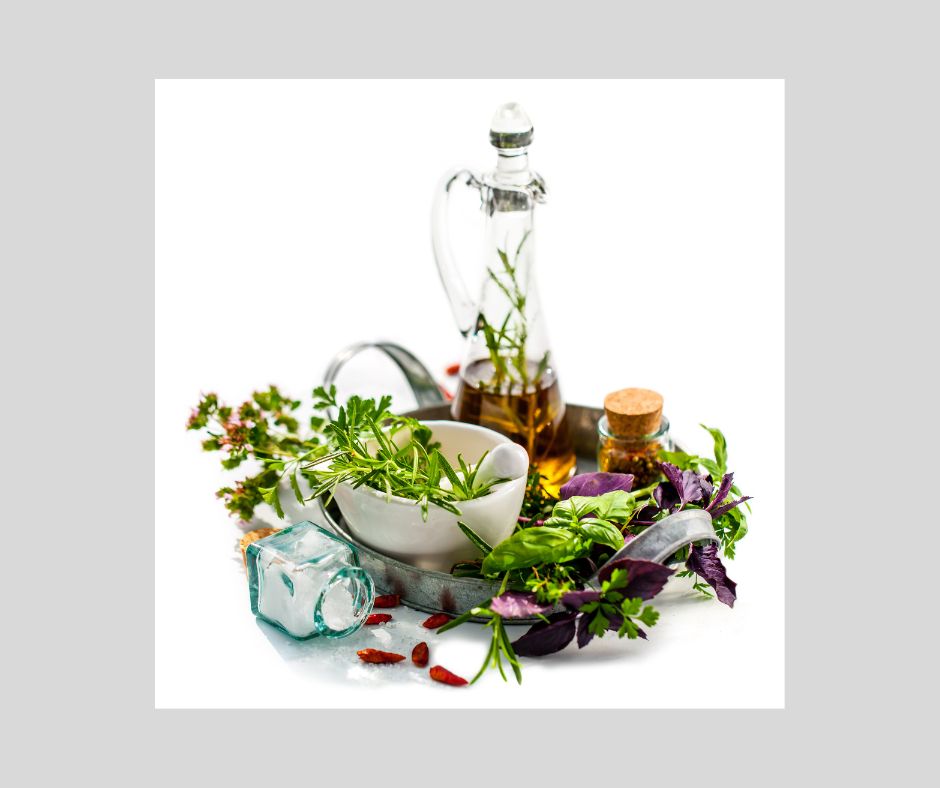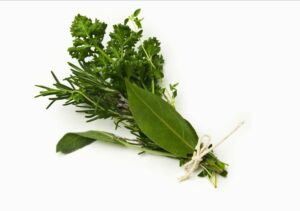
Nothing will elevate your food and your cooking the way seasoning it will. You can create dishes with bold and defined flavour or nuanced blends of flavours that leave the taster wondering “What is that secret ingredient?”
Spices are composed of the roots (e.g. ginger), bark (e.g. cinnamon), seeds (e.g. peppercorns), or fruit (e.g. paprika) of different plants. Herbs, more simply, are the leaves and stems of various plants.

Fresh herbs are easy to grow in containers inside or outside in your garden. Fresh herbs don’t stay fresh for long though, which is why drying and freezing are popular options. Dried herbs are convenient to store and use, but they don’t last forever. You should check the flavour of your dried herbs every 6 months or so and replace as needed. Drying concentrates the potency of the herb’s flavour. That’s why you will see recipes call for one tablespoon of a fresh herb but only a teaspoon of the dried version, for example.
To dry fresh herbs, simply gather the herbs in a small bouquet, tie or bind the stems together and hang the bouquet upside down until the herbs are completely dried out. I like to dry my herbs by hanging the bouquet on the inside of my pantry doors. Once the bouquet of herbs is dried out completely, crumble the leaves (and stems if appropriate) and store the herbs in a glass jar away from direct light and heat.
Many herbs can also be frozen. All you need to do is put your clean and dried fresh herbs in an airtight container and put them in the freezer. Frozen herbs will last several months in the freezer without losing their flavour. They do not need to be thawed before using. Freezing the herbs will not affect their flavour but will make the leaves and stems limp, so frozen herbs are not best for uncooked dishes.
Here’s a list of popular herbs and whether to use them fresh, dried, or frozen.
Type of herb | Fresh | Dried | Frozen |
Oregano | Yes | Yes | Yes |
Basil | Yes | Yes | No |
Parsley | Yes | Yes | Yes |
Mint | Yes | Yes | No |
Rosemary | Yes | Yes | No |
Thyme | Yes | Yes | No |
Dill | Yes | Yes | Yes |
Cilantro | Yes | No | Yes |
Bay leaves | Yes * | Yes | No |
*I don’t recommend using fresh bay leaves. They can have an overwhelming and bitter flavour.

For soups and stocks, you can make a bouquet garni – a palm-sized bundle of different herbs gathered together and added to the food as it’s cooking. At the end of the cooking time, the bouquet garni is removed and in this way imparts all the flavours of the herbs without adding any leaves, stems, or greenery.
Bay leaves add wonderful flavour but taste and feel terrible. Keep track of how many bay leaves you add to a dish as it cooks and make sure to remove them all at the end of the cooking time.
Add fresh herbs to the end of your cooking time to keep them bright and green.
You can infuse plain white vinegar or red wine vinegar with herbal flavours by simply placing clean, fresh herbs into the vinegar and letting the mixture sit for 2 weeks in a cool dark place. Strain the flavour-infused vinegar and store it in a fresh container. Throw away the used herbs. Note – do not us
Use a container with a metal lid for storing vinegar as the vinegar will react with the metal.
Don’t keep your spices and dried herbs near heat, such as by your stovetop.
Coming up in future blogs, I’ll share some of my favourite food and herb combinations, we’ll dive deeper into the exotic world of spices and we’ll sample recipes that use herbs and other flavourings in unusual ways.